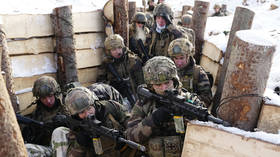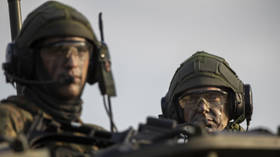NATO has doubled forces in Eastern Europe since 2021

NATO has doubled the number of troops stationed in Eastern Europe from 5,000 to 10,000 since 2021, spokeswoman Oana Lungescu said on Monday. However, NATO Secretary General Jens Stoltenberg’s plan to have 30 times that number on standby has not materialized.
Four new NATO battle groups have been set up in response to Russia’s military operation in Ukraine, with new deployments in Bulgaria, Hungary, Romania and Slovakia adding to existing battle groups in Estonia, Latvia, Lithuania, and Poland, all of which border Russia.
Currently, there are 10,000 troops spread across these eight battle groups, compared to 5,000 in the four groups in 2021, Lungescu told the Washington Post.
NATO Secretary General Jens Stoltenberg wants these 10,000 forward-deployed troops backed up by 300,000 high-readiness troops in reserve. Stoltenberg announced this plan a year ago, explaining that 100,000 would be deployable within ten days of a potential conflict with Russia breaking out, with the rest ready to hit the battlefield a month later.
However, Eastern European and Baltic officials told the Post that they still have no idea where these troops will come from, and whether they could arrive in time to repel a hypothetical Russian invasion. Since Stoltenberg’s announcement, NATO has offered no further details, including on who will finance the force.
While the battle groups are intended as a permanent presence, some NATO members doubt the commitment of their allies to the mission. Germany leads the battle group in Lithuania, but has opposed calls from Vilnius for a permanent brigade there. Instead, Berlin wants to withhold 6,000 troops and keep them in Germany, from where they could be deployed “if necessary.”
NATO describes Russia as “the most significant and direct threat to allies’ security and to peace and stability in the Euro-Atlantic area.” Moscow argues that the bloc’s continued expansion to the east following the Cold War, and its insistence on membership for Ukraine, constitute unacceptable threats to Russia’s national security.













